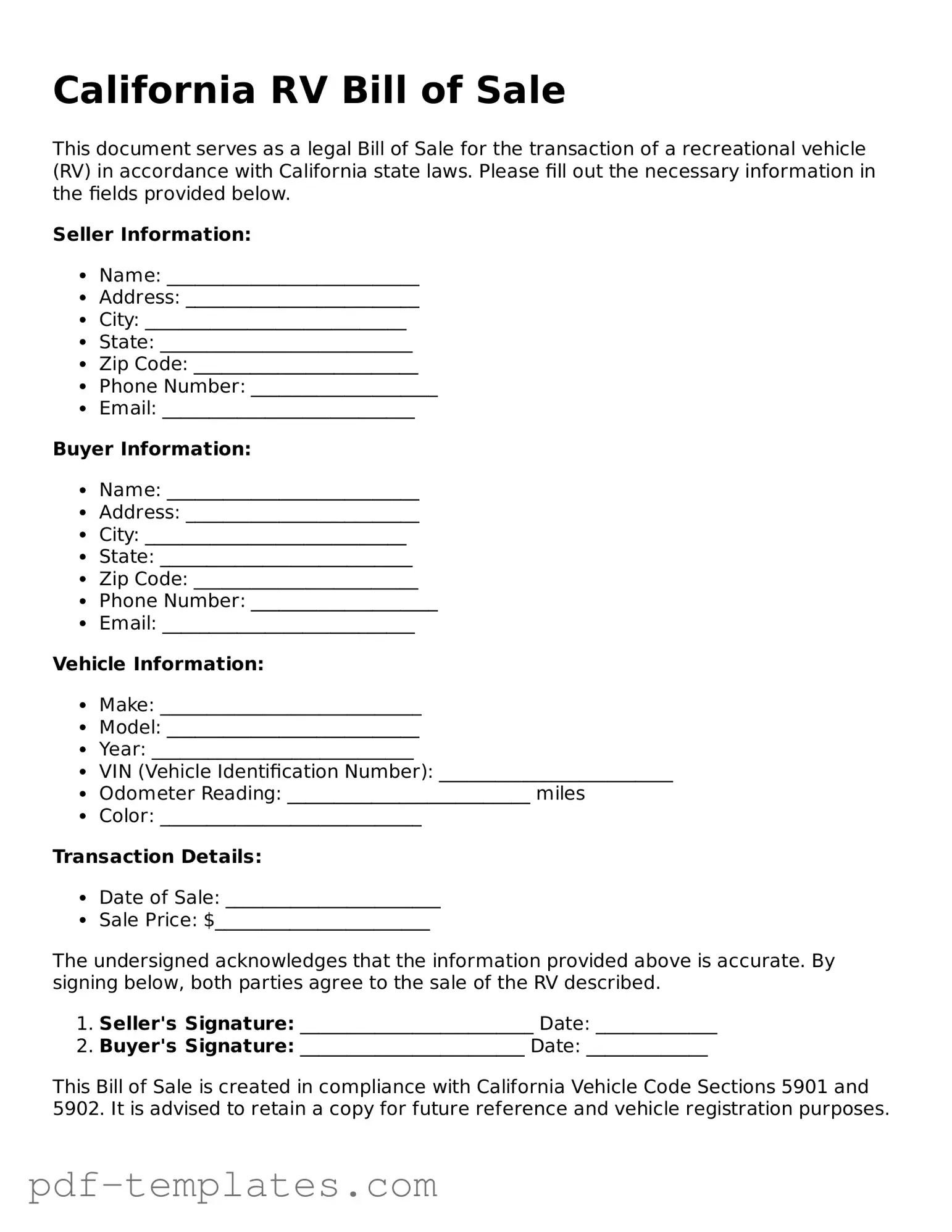The California Vehicle Bill of Sale is similar to the standard Bill of Sale used for personal property transactions. Both documents serve as proof of a sale, detailing the transfer of ownership from one party to another. They typically include information about the buyer and seller, a description of the item being sold, and the sale price. This document is crucial for establishing legal ownership and can be used in disputes or for tax purposes, just like the RV Bill of Sale.
Another document that shares similarities with the California RV Bill of Sale is the Title Transfer Form. This form is specifically used to transfer the title of a vehicle from one owner to another. It requires similar information, such as the names of the buyer and seller, vehicle identification number (VIN), and odometer readings. While the Title Transfer Form is often required by the Department of Motor Vehicles (DMV) to officially record the change in ownership, the RV Bill of Sale complements it by providing a detailed account of the transaction.
The importance of proper documentation in vehicle transactions cannot be overstated, as evidenced by forms like the pdftemplates.info/asurion-f-017-08-men-form/, which ensures clarity and legality in claims related to electronic devices. Just as various bills of sale serve their unique purposes in facilitating the transfer of ownership for different types of vehicles, proper forms help streamline the process, protect both parties, and ensure compliance with legal standards.
The Purchase Agreement is another document akin to the RV Bill of Sale. This agreement outlines the terms of the sale, including the price, payment method, and any conditions that must be met before the sale is finalized. While the RV Bill of Sale serves as a receipt for the transaction, the Purchase Agreement provides a more comprehensive overview of the buyer and seller's obligations. Both documents are essential for ensuring that all parties understand the terms of the sale.
Lastly, the Vehicle Registration Application is related to the RV Bill of Sale in that it is used to register the vehicle with the state after the sale. This application requires details that can also be found in the RV Bill of Sale, such as the buyer's information and vehicle specifics. While the RV Bill of Sale confirms the sale, the Vehicle Registration Application is necessary for the buyer to legally operate the RV on public roads. Together, they help facilitate a smooth transition of ownership and compliance with state regulations.
